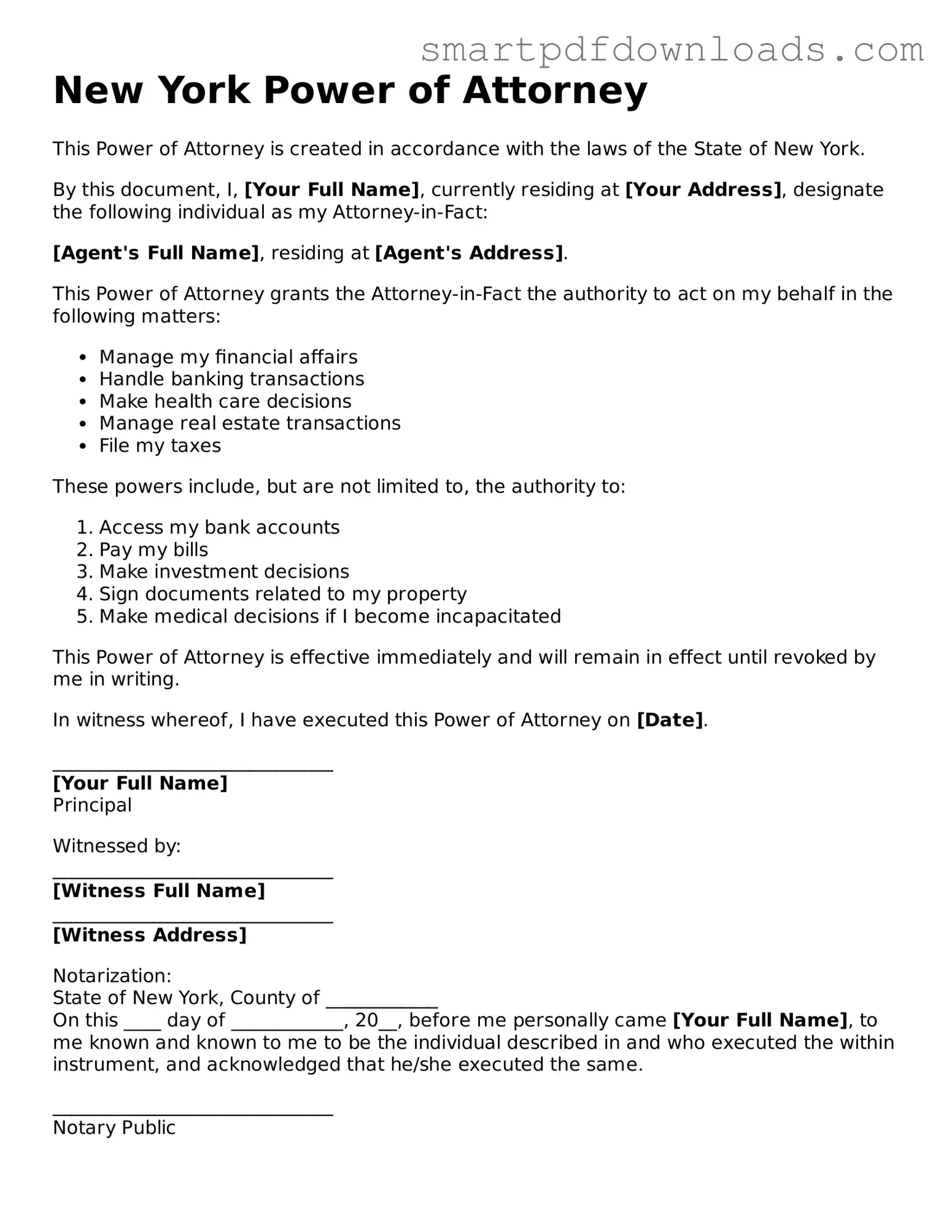New York Power of Attorney
This Power of Attorney is created in accordance with the laws of the State of New York.
By this document, I, [Your Full Name], currently residing at [Your Address], designate the following individual as my Attorney-in-Fact:
[Agent's Full Name], residing at [Agent's Address].
This Power of Attorney grants the Attorney-in-Fact the authority to act on my behalf in the following matters:
- Manage my financial affairs
- Handle banking transactions
- Make health care decisions
- Manage real estate transactions
- File my taxes
These powers include, but are not limited to, the authority to:
- Access my bank accounts
- Pay my bills
- Make investment decisions
- Sign documents related to my property
- Make medical decisions if I become incapacitated
This Power of Attorney is effective immediately and will remain in effect until revoked by me in writing.
In witness whereof, I have executed this Power of Attorney on [Date].
______________________________
[Your Full Name]
Principal
Witnessed by:
______________________________
[Witness Full Name]
______________________________
[Witness Address]
Notarization:
State of New York, County of ____________
On this ____ day of ____________, 20__, before me personally came [Your Full Name], to me known and known to me to be the individual described in and who executed the within instrument, and acknowledged that he/she executed the same.
______________________________
Notary Public
